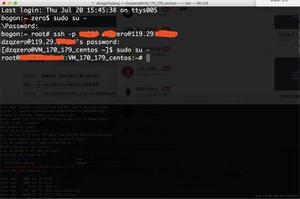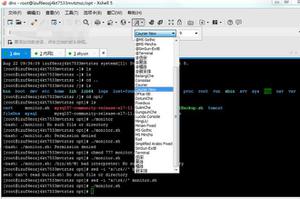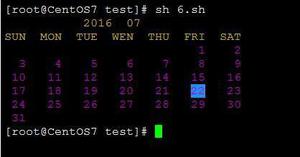SO_RCVTIME和SO_RCVTIMEO不影响Boost.Asio操作
下面是我的代码
boost::asio::io_service io;boost::asio::ip::tcp::acceptor::reuse_address option(true);
boost::asio::ip::tcp::acceptor accept(io);
boost::asio::ip::tcp::resolver resolver(io);
boost::asio::ip::tcp::resolver::query query("0.0.0.0", "8080");
boost::asio::ip::tcp::endpoint endpoint = *resolver.resolve(query);
accept.open(endpoint.protocol());
accept.set_option(option);
accept.bind(endpoint);
accept.listen(30);
boost::asio::ip::tcp::socket ps(io);
accept.accept(ps);
struct timeval tv;
tv.tv_sec = 1;
tv.tv_usec = 0;
//setsockopt(ps.native(), SOL_SOCKET, SO_SNDTIMEO, &tv, sizeof(tv));
setsockopt(ps.native(), SOL_SOCKET, SO_RCVTIMEO, &tv, sizeof(tv));
char buf[1024];
ps.async_receive(boost::asio::buffer(buf, 1024), boost::bind(fun));
io.run();
当我使用Telnet进行连接但不发送数据时,它不会与Telnet超时断开连接。需要做些setockopt踢吗?谢谢!
我已经将SO_RCVTIMEO修改为SO_SNDTIMEO。在指定的时间内仍无法超时
回答:
在Boost.Asio中使用SO_RCVTIMEO和SO_SNDTIMEO套接字选项很少会产生所需的行为。考虑使用以下两种模式之一:
组成操作 async_wait()
可以使用Boost.Asio计时器和具有该async_wait()操作的async_receive()操作来构成具有超时的异步读取操作。Boost.Asio
超时示例中演示了这种方法,类似于:
// Start a timeout for the read.boost::asio::deadline_timer timer(io_service);
timer.expires_from_now(boost::posix_time::seconds(1));
timer.async_wait(
[&socket, &timer](const boost::system::error_code& error)
{
// On error, such as cancellation, return early.
if (error) return;
// Timer has expired, but the read operation's completion handler
// may have already ran, setting expiration to be in the future.
if (timer.expires_at() > boost::asio::deadline_timer::traits_type::now())
{
return;
}
// The read operation's completion handler has not ran.
boost::system::error_code ignored_ec;
socket.close(ignored_ec);
});
// Start the read operation.
socket.async_receive(buffer,
[&socket, &timer](const boost::system::error_code& error,
std::size_t bytes_transferred)
{
// Update timeout state to indicate the handler has ran. This
// will cancel any pending timeouts.
timer.expires_at(boost::posix_time::pos_infin);
// On error, such as cancellation, return early.
if (error) return;
// At this point, the read was successful and buffer is populated.
// However, if the timeout occurred and its completion handler ran first,
// then the socket is closed (!socket.is_open()).
});
请注意,两个异步操作都可能在同一迭代中完成,这使得两个完成处理程序都可以成功运行。因此,这是两个完成处理程序都需要更新和检查状态的原因。有关如何管理状态的更多详细信息,请参见此答案。
采用 std::future
Boost.Asio 支持C ++
11期货。当boost::asio::use_future提供作为异步操作的完成处理程序时,初始化函数将返回a
std::future,该操作将在操作完成后实现。由于std::future支持定时等待,因此可以利用它来使操作超时。请注意,由于调用线程将被阻塞以等待将来,因此至少另一个线程必须正在处理,io_service以允许async_receive()操作进行并实现诺言:
// Use an asynchronous operation so that it can be cancelled on timeout.std::future<std::size_t> read_result = socket.async_receive(
buffer, boost::asio::use_future);
// If timeout occurs, then cancel the read operation.
if (read_result.wait_for(std::chrono::seconds(1)) ==
std::future_status::timeout)
{
socket.cancel();
}
// Otherwise, the operation completed (with success or error).
else
{
// If the operation failed, then read_result.get() will throw a
// boost::system::system_error.
auto bytes_transferred = read_result.get();
// process buffer
}
回答:
系统行为
该SO_RCVTIMEO文件指出,该选项仅影响系统调用执行套接字I /
O,如read()和recvmsg()。它不会影响事件多路分解器(例如select()和)poll(),它们仅监视文件描述符来确定何时可以发生I
/ O而不会阻塞。此外,当确实发生超时时,I / O调用将无法返回-1并设置errno为EAGAIN或EWOULDBLOCK。
指定接收或发送超时,直到报告错误。[…]如果没有数据被传输和达到超时然后
-1返回,并将errno设置EAGAIN或EWOULDBLOCK[…]超时只对系统调用执行套接字I/ O(效应,例如,
read(),recvmsg(),[。..];超时有任何效果
select(),poll(),epoll_wait(),等。
当底层的文件描述符设置为非阻塞,系统调用执行套接字I /
O将立即返回EAGAIN或者EWOULDBLOCK如果资源不立即可用。对于非阻塞套接字,SO_RCVTIMEO将不会有任何影响,因为调用成功或失败都会立即返回。因此,为了SO_RCVTIMEO影响系统I
/ O调用,套接字必须处于阻塞状态。
Boost.Asio行为
首先,Boost.Asio中的异步I /
O操作将使用事件多路分解器,例如select()或poll()。因此,SO_RCVTIMEO将不会影响异步操作。
接下来,Boost.Asio的套接字具有两种非阻塞模式的概念(两种模式均默认为false):
native_non_blocking()模式大致对应于文件描述符的非阻塞状态。此模式影响系统I / O调用。例如,如果调用socket.native_non_blocking(true),则设置为或recv(socket.native_handle(), ...)可能会失败。每当在套接字上启动异步操作时,Boost.Asio都会启用此模式。errno``EAGAIN``EWOULDBLOCKnon_blocking()模式会影响Boost.Asio的同步套接字操作。设置true为时,Boost.Asio会将基础文件描述符设置为非阻塞,并且同步的Boost.Asio套接字操作可能会失败boost::asio::error::would_block(或等效的系统错误)。当设置为false,Boost.Asio的将阻塞,即使底层的文件描述符是无阻塞,通过轮询文件描述符和重新尝试的系统I / O操作是否EAGAIN或EWOULDBLOCK返回。
的行为non_blocking()防止SO_RCVTIMEO从产生所需的行为。假设socket.receive()调用并且数据既不可用也不接收:
- 如果
non_blocking()为false,则系统I / O调用将超时SO_RCVTIMEO。但是,Boost.Asio随后将立即阻止对文件描述符的轮询以使其可读,这不受的影响SO_RCVTIMEO。最终结果是呼叫者被阻塞,socket.receive()直到接收到数据或发生故障为止,例如远程对等方关闭连接。 - 如果
non_blocking()为true,则基础文件描述符也是非阻塞的。因此,系统I / O调用将忽略SO_RCVTIMEO,立即通过EAGAIN或返回EWOULDBLOCK,并导致socket.receive()失败boost::asio::error::would_block。
理想情况下,SO_RCVTIMEO要与Boost.Asio配合使用,需要native_non_blocking()将其设置为false以使其SO_RCVTIMEO生效,但也需要non_blocking()将其设置为true以防止对描述符进行轮询。但是,Boost.Asio不支持此功能:
socket::native_non_blocking(bool mode)如果mode为
false,但is的当前值为,
non_blocking()则true此功能将以失败boost::asio::error::invalid_argument,因为组合没有意义。
以上是 SO_RCVTIME和SO_RCVTIMEO不影响Boost.Asio操作 的全部内容, 来源链接: utcz.com/qa/424677.html







